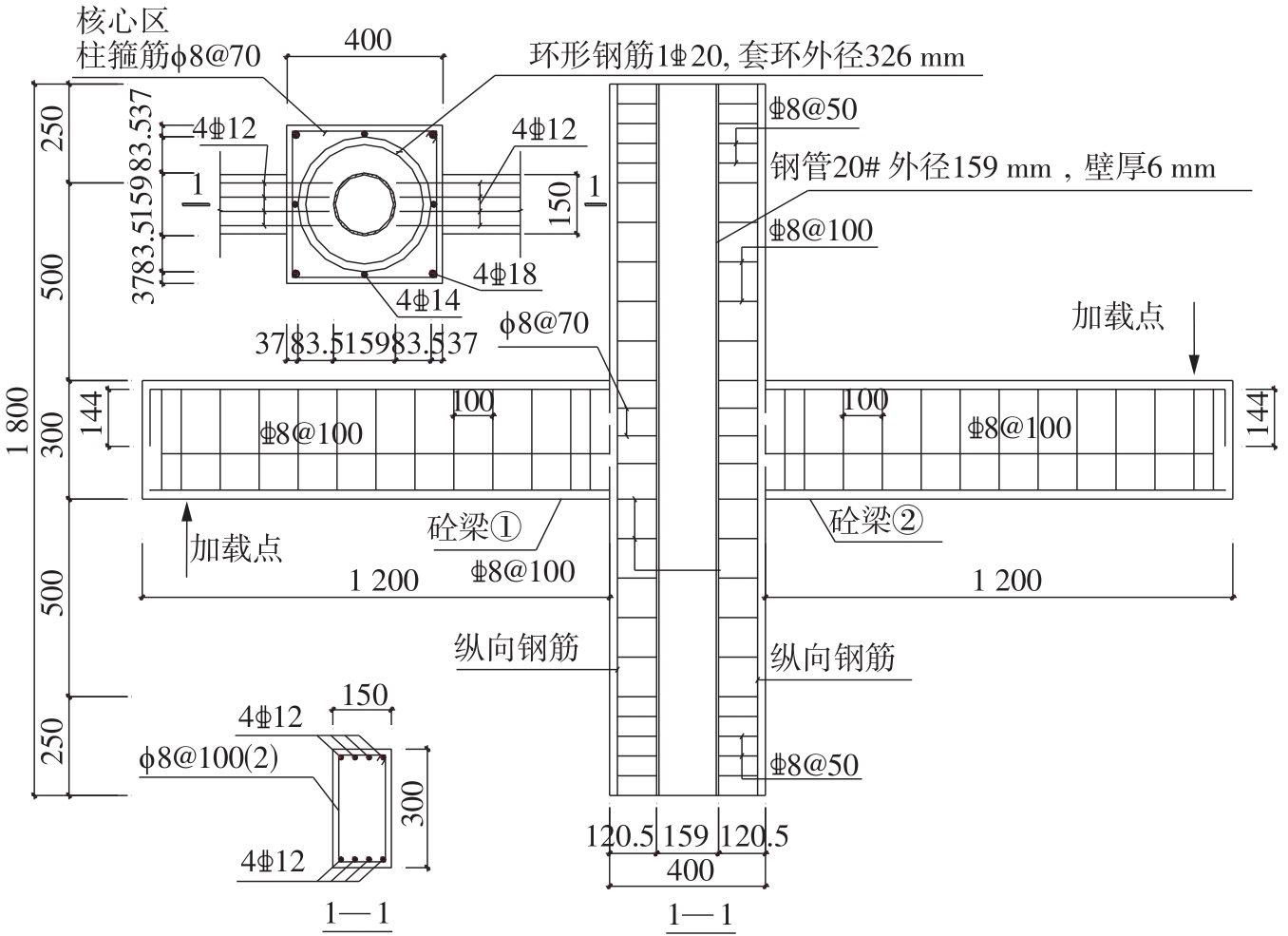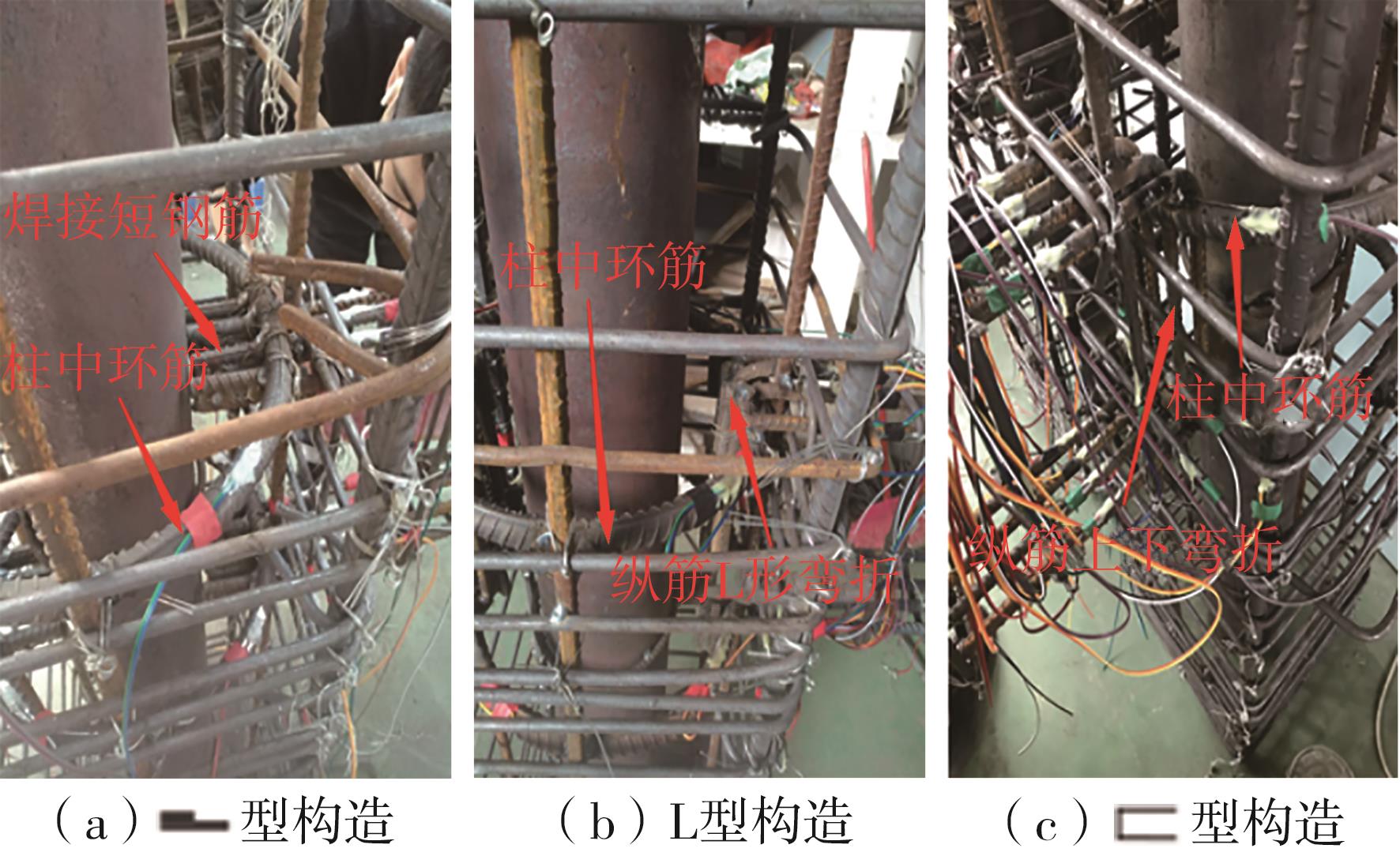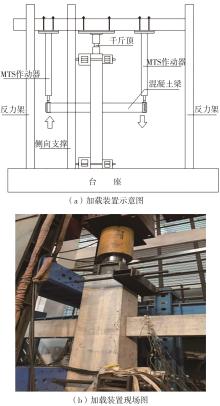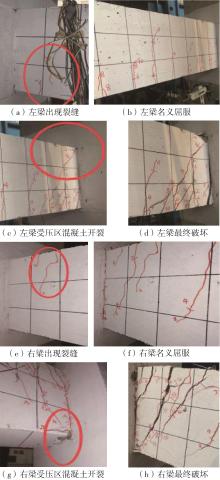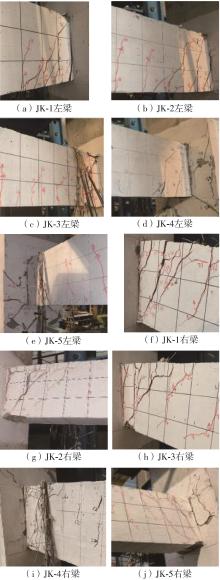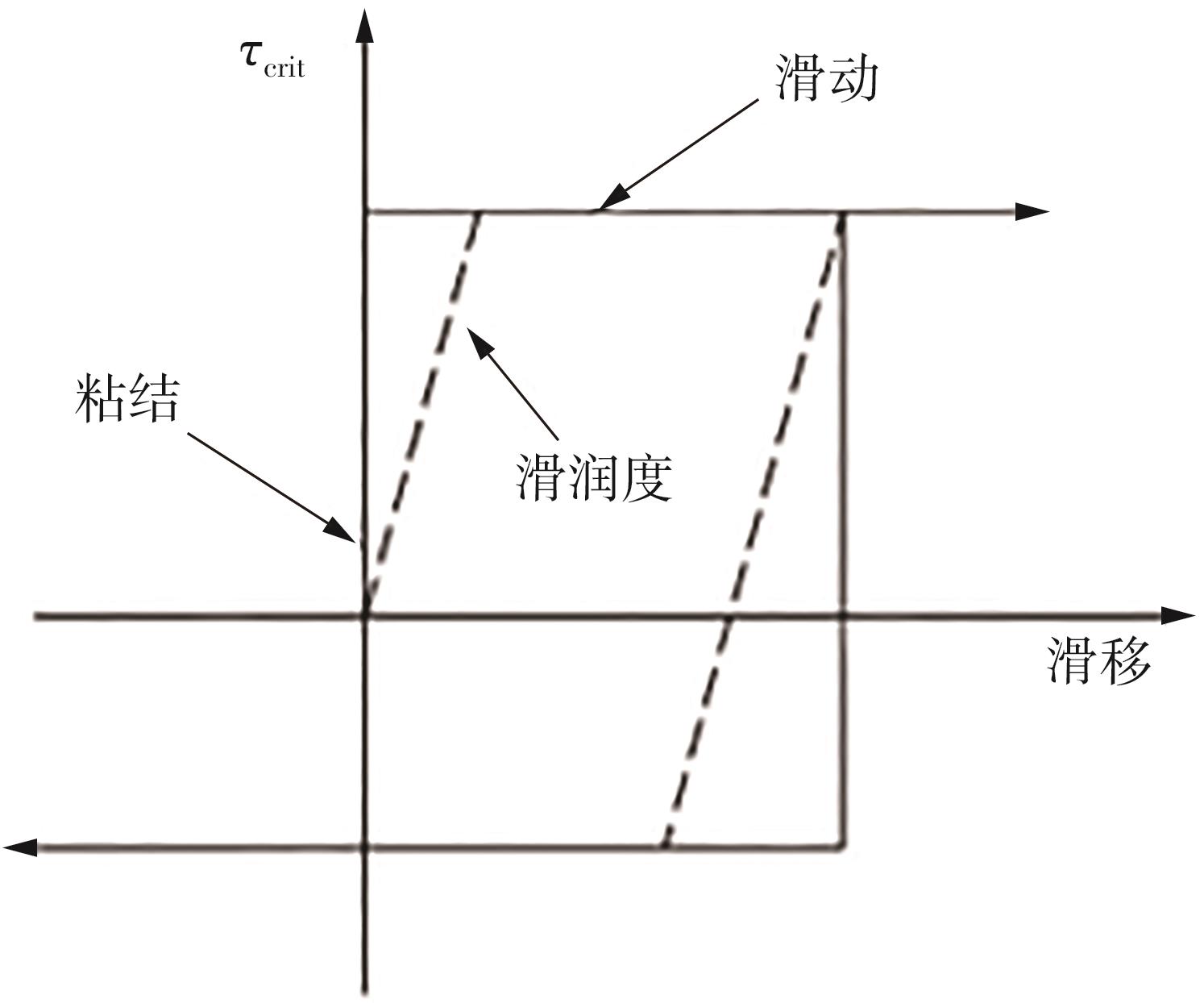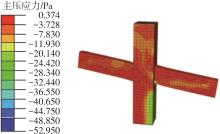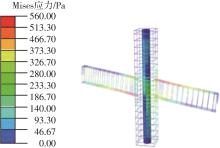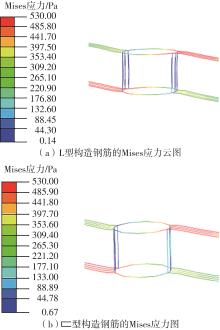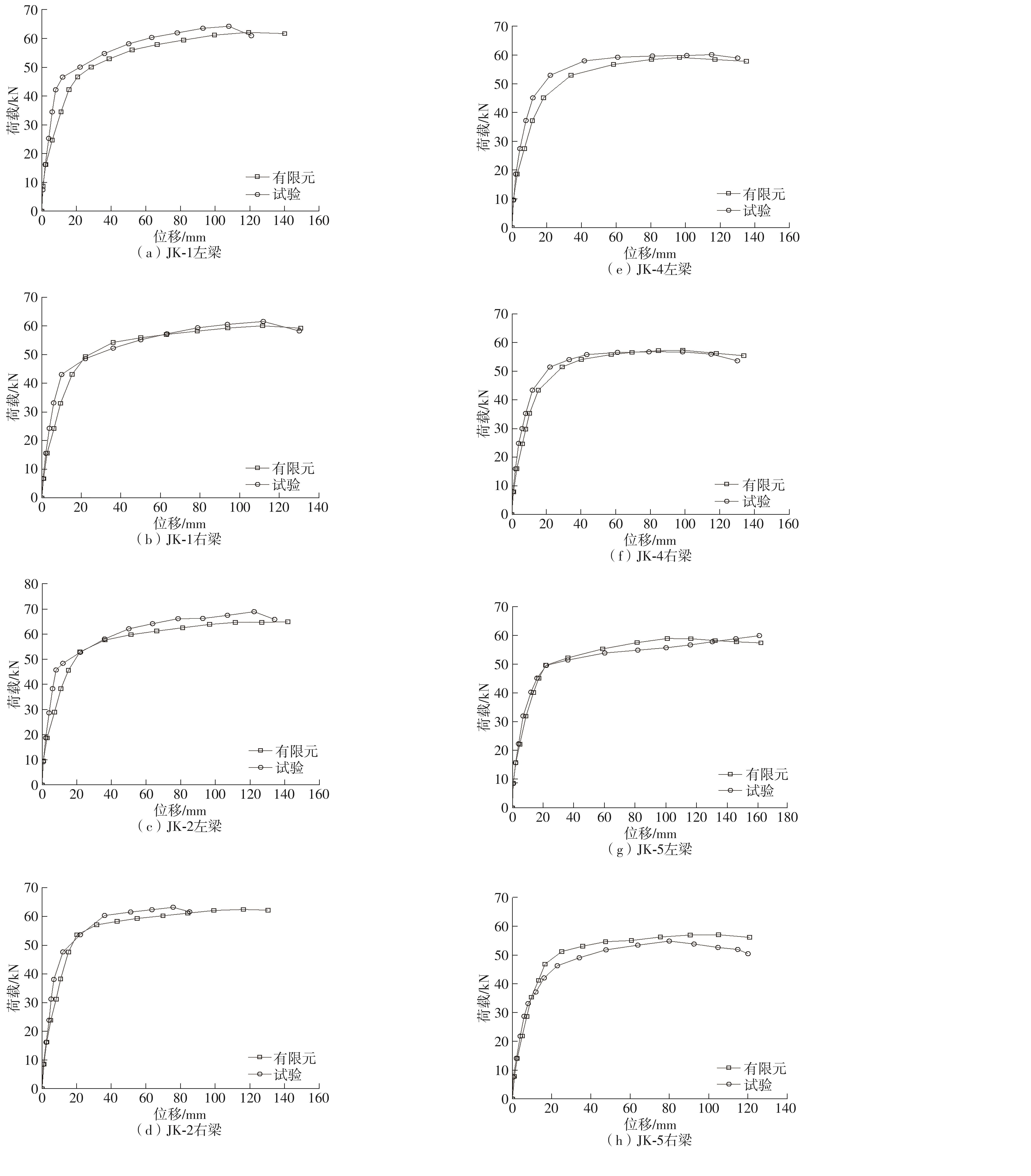Journal of South China University of Technology(Natural Science Edition) ›› 2022, Vol. 50 ›› Issue (11): 82-94.doi: 10.12141/j.issn.1000-565X.210807
Special Issue: 2022年土木建筑工程
• Architecture & Civil Engineering • Previous Articles Next Articles
Study on Mechanical Behavior of New Type Middle Joint of CFST Composite Column-Concrete Beam
LING Yuhong1,2,3 LIAO Haopeng2 XU Jinghang2 ZHOU Jing1 FANG Xiaodan1,4
- 1.State Key Laboratory of Subtropical Building Science,South China University of Technology,Guangzhou 510640,Guangdong,China
2.School of Civil Engineering and Transportation,South China University of Technology,Guangzhou 510640,Guangdong,China
3.Sino-Singapore International Joint Research Institute,Guangzhou 510640,Guangdong,China
4.Architecture Design Research Institute,South China University of Technology,Guangzhou 510640,Guangdong,China
-
Received:2021-12-15Online:2022-11-25Published:2022-04-08 -
Contact:方小丹(1951-),男,教授级高级工程师,主要从事建筑结构工程设计及结构抗震等研究。 E-mail:f5101@126.com -
About author:凌育洪(1969-),男,博士,教授,主要从事建筑结构抗震设计研究.E-mail:yhling@scut.edu.cn. -
Supported by:the National Nature Science Foundation of China(12172135)
CLC Number:
Cite this article
LING Yuhong, LIAO Haopeng, XU Jinghang, et al. Study on Mechanical Behavior of New Type Middle Joint of CFST Composite Column-Concrete Beam[J]. Journal of South China University of Technology(Natural Science Edition), 2022, 50(11): 82-94.
share this article
Table 4
Characteristic loads and displacements of specimens"
| 试件 | 梁端 | Pcr /kN | Mcr/ (kN.m) | Δcr/mm | Py/kN | My/(kN.m) | Δy/mm | Pm/kN | Mm/(kN.m) | Δm/mm | Pu/kN | Mu/(kN.m) | Δu/mm |
|---|---|---|---|---|---|---|---|---|---|---|---|---|---|
| JK-1 | 左梁 | 14.5 | 16.0 | 2.0 | 46.6 | 51.3 | 12.1 | 64.3 | 70.7 | 107.8 | 61.0 | 67.1 | 120.8 |
| 右梁 | 15.6 | 17.2 | 2.1 | 43.5 | 47.8 | 10.8 | 61.6 | 67.8 | 111.9 | 58.3 | 64.1 | 130.1 | |
| JK-2 | 左梁 | 18.6 | 20.5 | 2.0 | 48.3 | 53.1 | 11.7 | 69.0 | 75.9 | 122.3 | 65.9 | 72.5 | 134.1 |
| 右梁 | 16.2 | 17.8 | 2.0 | 45.0 | 49.5 | 10.6 | 63.3 | 69.6 | 75.7 | 61.7 | 67.9 | 85.2 | |
| JK-3 | 左梁 | 16.1 | 17.7 | 2.1 | 48.9 | 53.8 | 12.1 | 62.4 | 68.6 | 114.9 | 57.8 | 63.6 | 139.7 |
| 右梁 | 15.4 | 17.0 | 2.0 | 45.6 | 50.2 | 12.0 | 58.9 | 64.8 | 107.2 | 53.4 | 58.7 | 139.6 | |
| JK-4 | 左梁 | 16.8 | 18.5 | 1.9 | 48.2 | 53.0 | 16.0 | 60.1 | 66.1 | 115.0 | 59.0 | 64.9 | 130.0 |
| 右梁 | 15.9 | 17.5 | 1.9 | 46.2 | 50.8 | 15.4 | 56.7 | 62.4 | 79.1 | 53.6 | 59.0 | 130.1 | |
| JK-5 | 左梁 | 21.5 | 23.7 | 4.1 | 49.0 | 53.9 | 21.2 | 60.0 | 66.0 | 160.8 | 60.0 | 66.0 | 160.8 |
| 右梁 | 21.9 | 24.0 | 4.0 | 44.8 | 49.3 | 20.5 | 54.9 | 60.4 | 79.9 | 50.5 | 55.6 | 120.0 |
| 1 | 聂建国,王宇航,陶慕轩,等 .钢管混凝土叠合柱-钢筋混凝土梁外加强环节点抗震性能试验研究[J].建筑结构学报,2012,33(7):88-97. |
| NIE Jianguo, WANG Yuhang, TAO Muxuan,et al .Experimental study on seismic behavior of laminated steel tube column-concrete beam joint with outer stiffening ring[J].Journal of Building Structures,2012,33(07):88-97. | |
| 2 | 谭文勇 .钢筋混凝土梁-钢管混凝土叠合柱外加强环式节点受力性能有限元分析[J].武汉理工大学学报,2016,38(3):61-65. |
| TAN Wenyong .FEM analysis of the mechanical behavior of steel reinforced concrete column-RC beam composite joint[J].Journal of Wuhan University of Technology,2016,38(3):61-65. | |
| 3 | 周颖,于海燕,钱江,等 .钢管混凝土叠合柱节点环梁试验研究[J].建筑结构学报,2015,36(2):69-78. |
| ZHOU Ying, YU Haiyan, QIAN Jiang,et al .Experimental study on ring beams of joints of concrete filled steel tubular laminated columns[J].Journal of Building Structures.2015,36(2):69-78. | |
| 4 | 赵剑 .钢管混凝土叠合柱-钢筋混凝土梁节点滞回性能研究[D].福州:福州大学,2013. |
| 5 | MA D Y, HAN L H, ZHAO X L .Seismic performance of the concrete-encased CFST column to RC beam joint:Experiment[J].Journal of Constructional Steel Research,2019,154:134-148. |
| 6 | 钱炜武 .钢管混凝土叠合柱-钢梁连接节点抗震性能研究[D].北京:清华大学,2017. |
| 7 | 郑稣庭 .钢管混凝土叠合柱-钢梁连接节点滞回性能研究[D].福州:福州大学,2013. |
| 8 | LIAO F Y, HAN L H, TAO Z .Behaviour of composite joints with concrete encased CFST columns under cyclic loading:Experiments[J].Engineering Structures,2014,59:745-764. |
| 9 | 周颖,于海燕,钱江,等 .钢管混凝土叠合柱节点环梁受弯承载力计算方法[J].建筑结构学报,2015,36(2):79-86. |
| ZHOU Ying, YU Haiyan, QIAN Jiang,et al.Moment capacity calculation method on ring beams of joints of concrete filled steel tubular laminated columns[J].Journal of Building Structures,2015,36(2):79-86. | |
| 10 | 廖飞宇,赵剑,尧国皇,等 .钢管混凝土叠合柱-混凝土梁节点滞回性能的有限元分析[J].建筑钢结构进展,2019,21(5):1-12,19. |
| LIAO Feiyu, ZHAO Jian, YAO Guohuang,et al .Hysteretic Performance finite element analysis of concrete encased CFST column to concrete beam joints under cyclic loading[J].Progress of Building Steel Structure,2019,21(5):1-12,19. | |
| 11 | 马丹阳 .钢管混凝土加劲混合柱-RC梁连接节点抗震性能研究[D]北京:清华大学,2019. |
| 12 | 聂建国,王宇航,陶慕轩,等 .钢管混凝土叠合柱-钢筋混凝土梁外加强环节点抗震性能试验研究[J].建筑结构学报,2012,33(7):88-97. |
| NIE Jianguo, WANG Yuhang, TAO Muxuan,et al .Experimental study on seismic behavior of laminated steel tube column-concrete beam joint with outer stiffening ring[J].Journal of Building Structures,2012,33(7):88-97. | |
| 13 | 陈文浩 .钢管混凝土组合柱-钢筋混凝土梁节点的力学性能研究[D].绵阳:西南科技大学,2018. |
| 14 | 李宁波,万怡秀,吴昭华,等 .RC梁-核心区钢管壁开洞组合柱节点试验[J].哈尔滨工业大学学报,2013,45(12):63-69. |
| LI Ningbo, WAN Yixiu, WU Zhaohua,et al .Experimental study on connections of RC beam-composite column with openings on steel tube[J].Journal of Harbin Institute of Technology,2013,45(12):63-69. | |
| 15 | 程文瀼,高仲学,苏毅,等 .钢骨混凝土柱框架节点的试验研究[J].建筑结构学报,2002,23(2):36-40. |
| CHENG Wenrang, GAO Zhongxue, SU Yi,et al .Experimental study of frame joints with steel reinforced concrete column[J].Journal of Building Structures,2002,23(2):36-40. | |
| 16 | 凌育洪,温新贵,郑文丽,等 .新型叠合柱-混凝土梁边节点的受力性能试验研究[J].华南理工大学学报(自然科学版),2022,50(1):38-49. |
| LING Yuhong, WEN Xinggui, ZHENG Wenli,et al .Experimental study on mechanical behavior of new type side joint of CFST composite column-concrete beam[J].Journal of South China University of Technology(Natural Science Edition),2022,50(1):38-49. |
| [1] | CHEN Zongping, QIN Weiheng, LIANG Yuhan, ZHOU Ji. Test and Bearing Capacity Calculation Method of Concrete-Filled CFRP-Stainless Steel Sandwich Tube Columns Under Axial Compression [J]. Journal of South China University of Technology(Natural Science Edition), 2024, 52(1): 1-14. |
| [2] | JIANG Dongqi, WU Hao, FAN Jin. Study on Whole-Process Mechanical Behavior of Novel Spread Slab Beam Bridges [J]. Journal of South China University of Technology(Natural Science Edition), 2024, 52(1): 38-51. |
| [3] | DENG Manyu, YUAN Xingfei, DONG Yongcan. Study on Area-Loss Limit of Cable-Strut Structures Considering Different Failure Modes [J]. Journal of South China University of Technology(Natural Science Edition), 2024, 52(1): 52-61. |
| [4] | LI Ying, WANG Bozhong, HE Shuang, et al.. Thickness Distribution of Low Stress Three-Layer Bearing for Cam Lobe Hydraulic Motor [J]. Journal of South China University of Technology(Natural Science Edition), 2023, 51(11): 93-100. |
| [5] | KANG Lan, CHEN Zonglin, LIN Yiwei . Axial Compression Behavior of High-Strength Circular Steel Tube Confined High-Strength Steel Reinforced Concrete Short Columns [J]. Journal of South China University of Technology(Natural Science Edition), 2022, 50(7): 1-12. |
| [6] | ZHENG Hongyu, YU Yuqi, XU Dixin, et al. Axial Compression Test of Seawater Sea-Sand Concrete Circular Column Inner-Confined by BFRP Spiral Strip [J]. Journal of South China University of Technology(Natural Science Edition), 2022, 50(5): 96-108. |
| [7] | XIONG Ergang, ZU Kun, HU Qinbin, et al. Shear Capacity Prediction for RC Beams Without Stirrups Based on Mechanical Research [J]. Journal of South China University of Technology(Natural Science Edition), 2022, 50(11): 115-124. |
| [8] | WANG Jinxiao, LI Sida, CHENG Bin, et al. Experimental Study on Fatigue Behavior of Adhesive & Bolted Hybrid FRP Joints [J]. Journal of South China University of Technology(Natural Science Edition), 2022, 50(11): 95-106. |
| [9] | MA Yudong, MA Kaize, WEI Hui, et al. Shear Behavior of Steel Fiber Reinforced High-Strength Concrete Deep Beams [J]. Journal of South China University of Technology (Natural Science Edition), 2021, 49(4): 20-27,38. |
| [10] | TIAN Wenling, LI Xinbo, ZHOU Jian, et al. Compressive Performance of Brick Columns Strengthened with Textile Reinforced Concrete [J]. Journal of South China University of Technology (Natural Science Edition), 2020, 48(9): 34-42,70. |
| [11] | REN Jibin WANG Cunxian ZHANG Xinyue SUO Tao LI Yulong TANG Zhongbin. Johnson-Cook Constitutive Model and Failure Parameters of 2A97 Al-Li Alloy [J]. Journal of South China University of Technology (Natural Science Edition), 2019, 47(8): 136-144. |
| [12] | ZHANG Yi LI Zhengliang LIU Hongjun LIU Shuyu . Study on the Stability Bearing Capacity of Unequal Angle Cross Bracing of Ultra-high Voltage Transmission Tower [J]. Journal of South China University of Technology (Natural Science Edition), 2019, 47(7): 19-31. |
| [13] | YANG Lufeng HUANG Zilin XIE Weiwei. Homogeneous Generalized Yield Function and Ultimate Bearing Capacity Evaluation of Rectangular Steel Frame [J]. Journal of South China University of Technology (Natural Science Edition), 2019, 47(3): 143-152. |
| [14] |
ZHANG Wangxi DENG Xi HE Chao.
Static Tensile Behavior of Half Grout Sleeve Splicing of Rebars Under High Temperature
|
| [15] | DENG Wenqin ZHANG Jiandong ZHANG Hong ZHANG Yongtao . Mechanical Behavior of Segmental Precast Prestressed Composite Box Girder with Corrugated Steel Webs [J]. Journal of South China University of Technology (Natural Science Edition), 2018, 46(7): 128-136. |
| Viewed | ||||||
|
Full text |
|
|||||
|
Abstract |
|
|||||


 型
型 型
型 型
型 型
型
